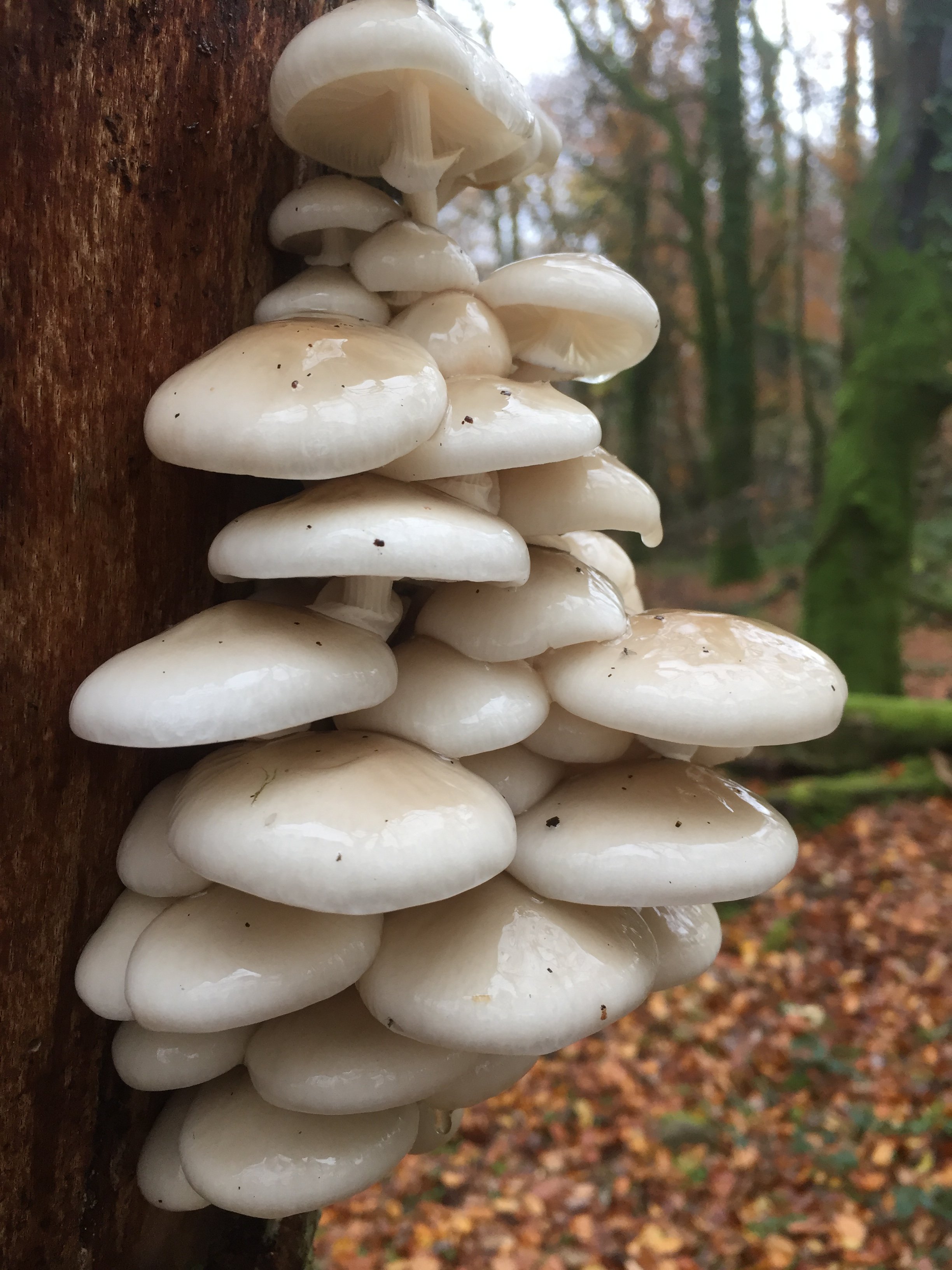
It’s worth getting to know this spectacular species for several reasons. It can grow in abundance on old Beech trees so, once found, you are likely to have enough for a decent meal. It tends to persist into the winter, even after the onset of cold weather has ended the season for most other species. It has a nice strong flavour and is hard to confuse with anything else which is always a reassuring feature in fungi.
At a distance they really do look like they are made from porcelain; as if a well-aimed hammer blow could send them crashing to the ground in a blur of shattered fragments. Closer inspection reveals a different truth. The caps are soft, flexible and literally dripping with slime. The stems are drier and more fibrous and although that makes them unpalatable, they do provide a welcome slime-free point of contact to help the gathering process.
It’s best to remove as much of the slime as possible from the caps by rinsing, and then drying, them. They retain their somewhat slippery nature even when cooked, though the texture is not unpleasant to my mind. If you enjoy eating other fungi, these are worth trying at least once to see how you get on with them.
[registration_form]